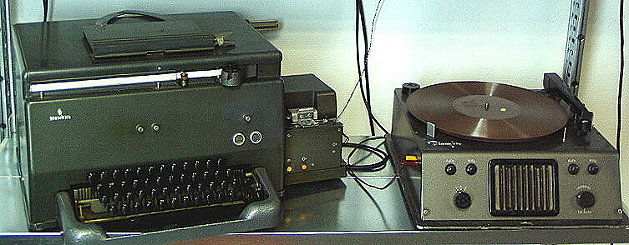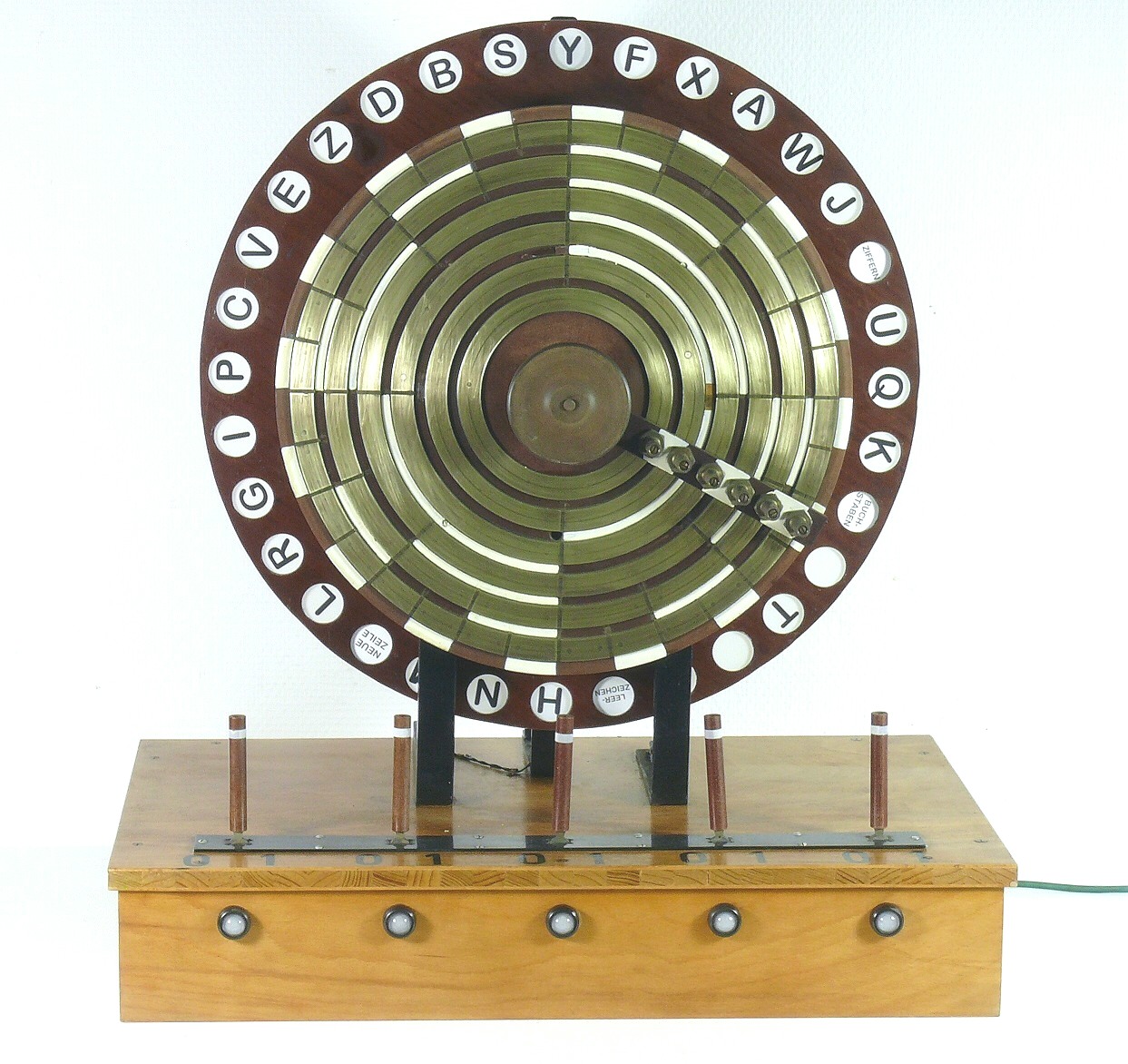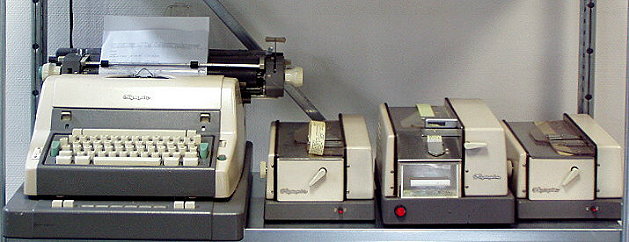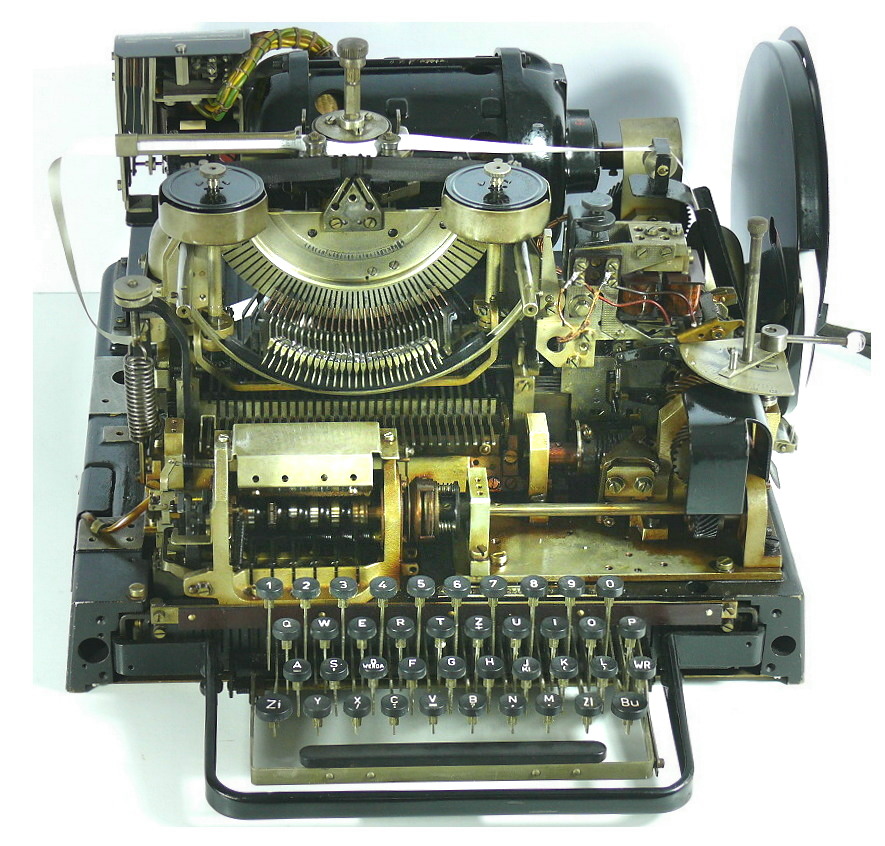Telex technology
The heyday of mechanics in telecommunications was clearly marked by a wide
variety of teletypewriters (by the way - this reflects until today in the
naming of serial line interface devices in UNIX which are traditionally called
"tty"). The so-called "Springschreiber T32" is quite rare and was built between
the 1930s and the 1950s. It writes onto a narrow paper strip. It is built so
heavily that it is nearly indestructible. As F. Schiweck ("Fernschreibtechnik",
1942) notes:
"The Teletypewriter is one of this most stunning productions and a marvel of mechanical design. It requires the best materials available and is a marvel of construction. According to general opinion, its relability of operation is extremely high."
Back in those heydays of mechanical engineering the field engineers required a steady hand, good hearing to spot troublesome noises, and, of course, an oil can as well. Their profession vanished in the 1980s.

The Hellschreiber GL 72, year of manufacture 1952 (in the picture on the left). This device assignes an unique sequence of frequencies to each key. Thus the device could make use of the telephone network, like the later modems did to build up the internet. This feature distinguishes it from the ordinary teletypes.
Nevertheless the clatting teletypes coined high speed
telecommunication for decades. The first teletype was presented
in 1930 by Siemens & Halske – only three years later,
the German Post used them for communication all over Germany.
The first official connection in Germany was build between the capital, Berlin,
and the Hanseatic City of Hamburg. Unlike the
Hellschreiber, the teletype did not use the already existing
telephone network, so they had to build up a seperate telex
network.
At first there were only 21 subscribers in 1933, but only six
years later, they counted 1500 subscribers in 1939. In 1975
there were actually more than 90,000 subscribers. In these
days, the mechanically working teletypes were replaced by
electronically driven devices (Telex). Even nowadays, in
times of the internet, a few developing countries use this
disaster safe kind of communication.

Siemens Teletype, year of manufacture 1952
Below in the picture, you can see a paper tape sender. While typing the text, it was fed into the paper tape and could be send afterwards quite fast. This is quite equal how today's e-mail clients work: They buffer the text while the user inputs it until it is send in one go, instead of streaming the keyboard input "live" to the recipient. Of course this apperature is still fully executable.

Decoder: 5-Bit to telex
Enlarge picture
Recently we saved this large (70cm by 60cm) and wonderful "decoder" from scrap
at a local university. This device translates 5 bit telegraph codes to their
corresponding characters. It has been built as a demonstration object by the
university's machine shop sometime between 1937 and 1949 and has been used
extensively in lectures.
Principle of operation: A 5 bit value is set by means of the large levers. Then
the code wheel is turned slowly until the correct character is in the top
position which is denoted by lighting a lamp. If, e.g., 10101 is set and the
code wheel is turned, the lamp will be lit under the character "Y".
What once was state-of-the-art technology is now used as a decoding device for
our experimental workshops. There kids can decipher texts given in binary and
thus gain experience with binary data representation.
Flexowriter

As a kind of spin-off products of the teletype
development, the electromechanical "wordprocessing systems"
(1962 – 1964) were invented. They were capable
of duplicating and writing texts automatically, using
paper tapes and punch cards as storage media.
The technology of these devices was quite complex
– at that time only big companies could afford these
typically German devices.
The picture above shows the Olympia flexowriter
with two paper tape readers and one paper tape puncher,
year of manufacture 1962.
